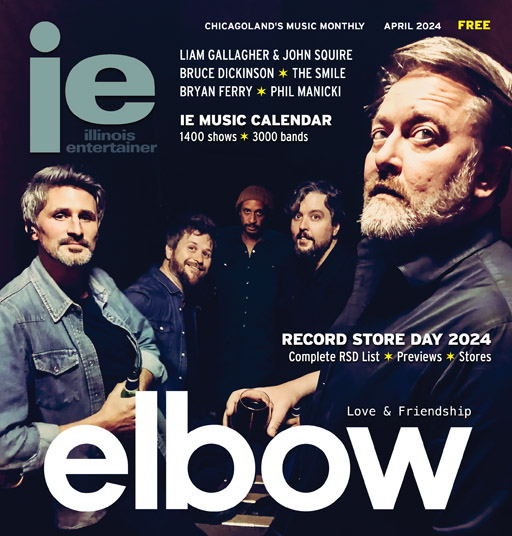Urban Latino Chic
“It’s urban Latino chic, something that’s really cool,” says Michael Ramos, when asked to define the electronic/Latin folk/rock melting pot that is Charanga Cakewalk. Originally a studio project that bloomed into a full-fledged act comprising Ramos and any guest musicians he decides to invite, Charanga Cakewalk represents the musical evolution of the musician’s life. Growing up in a small farming town near Houston, Ramos absorbed both the ’70s hard rock of ELO and Ted Nugent as well as the Tejano, cumbia, and ranchera his parents favored. “I’d listen to the radio all day long,” says Ramos. Although he was steeped in Texas’ Mexican-American culture, he felt pressure to focus on the hard rock his friends listened to and ignore the Latin rhythms that swirled around his home.

Nevertheless, Ramos’ keen ears steered him further away from his friends’ musical tastes. “I remember Paul Simon’s ‘Me And Julio Down By The Schoolyard’ as the first time I heard Latin elements on Top-40 radio,” he says. The teen started noticing other rhythms, such as ska and reggae. “I started carrying around issues of Rolling Stone. I had heard Johnny Nash’s version of ‘Stir It Up’ and I started reading about Bob Marley. I bought his record and I thought it would be bouncy and cute. It wasn’t. The more I got into it, the more I couldn’t relate to my friends musically. I looked for things more complex and rhythmic.”
That’s still the case, as evidenced by the smorgasbord of sounds on Charanga Cakewalk’s new CD, Chicano Zen (Triloka). A colorful collection of 11 tracks that range from hypnotic electronica grooves to old-school boleros, this album, along with last year’s critically acclaimed Loteria de la Cumbia Lounge, firmly establishes Ramos as a Latin music star with a catch.
A twisted road to Latin music is truly an understatement when you consider Ramos constructed the first part of his 30-year career as a sideman for roots rock groups the BoDeans and The Rembrandts. (He wasn’t there for the “Friends” theme song recording.) The rest of the time he worked as a session man for Paul Simon, folk rocker Patty Griffin, and until a couple of months ago, John Mellencamp. Not exactly a Latin music star’s resume, but Ramos says there were always undercurrents of the direction he would finally take with his music.
“I started off playing piano as a kid and as I got older, I got more comfortable with the concept of playing Latin music,” he says. “Groups like Los Lobos made it O.K. One day, I just decided to buy an accordion [the key element for Tex-Mex conjunto and Tejano music]. I had just joined the BoDeans as the keyboard player and I took it out on the road. One of the band members saw it and told me to bring it to practice. On my first gig with the BoDeans, they tell me to play the accordion! It was baptism by fire. I had to learn the technique as I went along. It’s got a keyboard so I didn’t have to learn the notes, but it was intense.”
Ramos was ridiculed for playing the accordion but managed to ignore it. “It’s so cliche to make fun of the accordion,” he says. “There were very few accordion players 20 years ago and it was not cool. Then I started working with artists who wanted accordion on everything. When people joke about it, I say, ‘Hey, come see the studio that the accordion built.'”
Through the years of playing with various pop/rock acts and lacing their music with hints of Latin flavor, it never occurred to Ramos to form a Latin band. “I never wanted to front any band,” he insists. “I’m the reluctant frontman. I just wanted to sit home and make records.” The turning point arrived when Ramos produced the title track for Griffin’s Grammy-nominated 1,000 Kisses in 2001. Based upon his favorite Tejano standard, “Mil Besos,” he convinced the non-Spanish-speaking Griffin to sing it in Spanish to underscore the emotional purity with luscious Latin rhythms. The result convinced Ramos to finally record his own Latin-based album.
Chicano Zen echoes Ramos’ influences and inspirations on various levels. The CD cover shows a flour and a corn tortilla, arranged to form the yin yang symbol. On top are flaming Mexican heart icons. It’s an obvious reference to the musician’s heritage but also a reflection of his broader outlook.
“You always have to make choices, whether it’s paper or plastic, decaf or caf,” says Ramos. “In Austin, it’s a given that you’ll always be asked, ‘flour or corn?’ We all have to live by our decisions, big or small. I wanted to let people in on who I am and where I’ve been. I look into ways to incorporate all those things and filter it through the fact that I am Chicano or Latino.”
Chicano Zen‘s title track opens the disc and wraps Lila Down‘s ethereal vocals around a peppy electronica beat sprinkled with strains of traditional bajo sexto and harp playing. The song features Ramos giving trancey shout outs to such cultural staples as quinceñeras (sweet 15 celebrations), abuelos (grandparents), novelas (soap operas), and polkas y rancheras (Tex-Mex accordion-based music). Although it’s sung totally in Spanish and features traditional Latin instruments such as the bajo sexto, juarana, and, of course, the accordion, there’s enough musical crossover to capture anyone’s attention.
Besides being urban Latino chic, Ramos believes any listener can relate to Charanga Cakewalk, regardless of Spanish skills.
“For me, when I listen to world music and they’re singing in another language, I make up the lyrics in my head. My music can be whatever people want it to be.”
– Rosalind Cummings-Yeates
Category: Monthly










Thanx a lot about info, I just go crazy about different Latino music, esp instrumental, but dance also will do:) You may be curious to look to ‘http://dance-mp3.info/, newest albums there